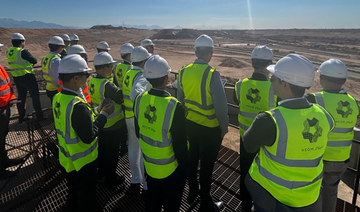LAHORE: Pakistani real estate giant Rafi Group made a 10-fold profit last year from its sale of hundreds of acres of land in the remote fishing town of Gwadar, acquired soon after the government announced plans for a deep-sea port there.
The windfall came after 12 years of waiting patiently for the Gwadar port to emerge as the centerpiece of China’s ambitious plans for a trade and energy corridor stretching from the Arabian Gulf, across Pakistan, into western Xinjiang.
“We had anticipated the Chinese would need a route to the Arabian Sea,” Rafi Group Chief Executive Shehriar Rafi told Reuters. “And today, all routes lead back to Gwadar.”
Gwadar forms the southern Pakistan hub of a $57-billion China-Pakistan Economic Corridor (CPEC) of infrastructure and energy projects Beijing announced in 2014.
Since then, land prices have skyrocketed as property demand has spiked, and dozens of real estate firms want to cash in.
“Gwadar is a ‘Made in China’ brand and everyone wants a piece,” said realtor Afzal Adil, one of several who shifted operations from the eastern city of Lahore in 2015.
Last year, Pakistan welcomed the first large shipment of Chinese goods at Gwadar, where the China Overseas Ports Holding Company Ltd. took over operations in 2013. It plans to eventually handle 300 million to 400 million tons of cargo a year.
It also aims to develop seafood processing plants in a nearby free trade zone sprawled over 923 hectares (2,281 acres).
The route through Gwadar offers China its shortest path to the oil-rich Middle East, Africa, and most of the western hemisphere, besides promising to open up remote, landlocked Xinjiang.
2 million jobs
Last year, the Applied Economics Research Center estimated the corridor would create 700,000 jobs in Pakistan and a Chinese newspaper recently put the number at more than 2 million.
Authorities have completed an expressway through Gwadar, which has a 350-km road network. A new international airport kicks off next year, to handle an influx of hundreds of Chinese traders and officials expected to live near the port.
The volume of Gwadar property searches surged 14-fold on Pakistan’s largest real estate database, Zameen.com, between 2014 and 2016, up from a prior rate of a few hundred a month.
“It’s like a gold rush,” said Chief Executive Zeeshan Ali Khan. “Anyone who is interested in real estate, be it an investor or a developer, is eyeing Gwadar.”
Prices, which have risen two- to four-fold on average, are climbing “on a weekly basis,” said Saad Arshed, the Pakistan managing director of online real estate marketplace Lamudi.pk.
Regional fishermen have held strikes during the last two years, to protest against being displaced by the port.
To keep pace with the interest, urban officials are struggling to computerize land management and record-keeping. “We are trying to upgrade as fast as we can,” said Zakir Majeed, an official of the Gwadar Development Authority (GDA).
But Gwadar lacks basic education and health facilities, in contrast to the gleaming towers and piped drinking water of the “smart city” envisioned by the GDA.
“For commercial projects, things are moving fast,” Lamudi’s Arshed said. “But people actually living there, that will take a long time.”
Port officials expect the population to hit 2 million over the next two decades, from about 185,000 now.
Risk
The government commissioned work on the Gwadar port in 2002, but development was held up by chronic instability in the surrounding resource-rich province of Baluchistan, where ethnic separatist rebels have chafed against a military crackdown.
Since China announced the corridor plan in 2014, security has improved, with Pakistan setting up a new army division to ensure protection, while hundreds of rebels surrendered arms.
Real estate firms dismiss fears the “Gwadar bubble” might still burst, pointing to China’s enduring interest.
“The risk is always there,” Rafi said. “But our confidence comes from knowing this is not a Pakistani initiative, but a Chinese city on the Arabian Sea coast. And the Chinese will see that it is built.”
Land rush around Pakistan’s Gwadar port triggered by Chinese investment
Land rush around Pakistan’s Gwadar port triggered by Chinese investment
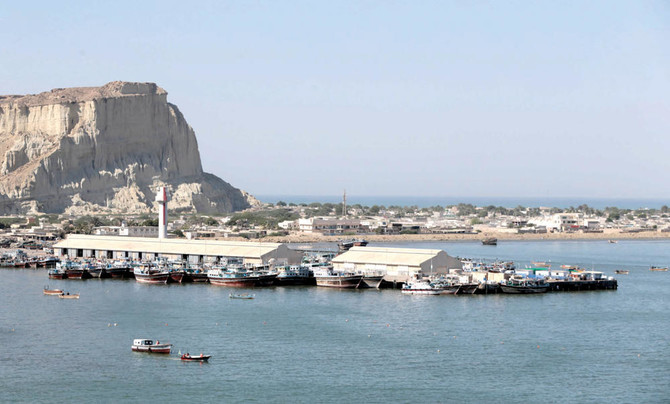
Oil Updates – crude stabilizes after sharp drop on demand concerns, easing of Middle East tension
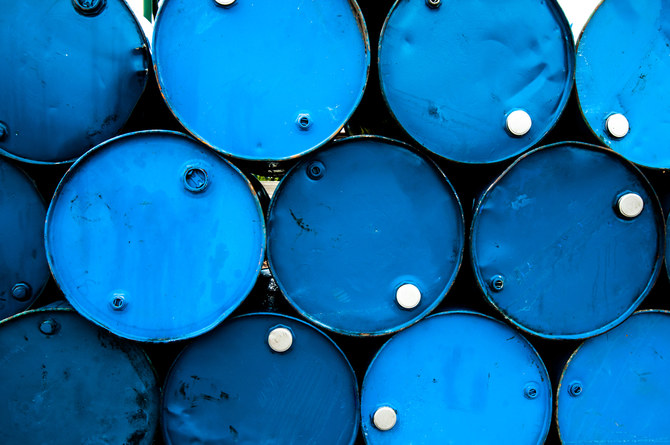
NEW DELHI: Oil prices were little changed after a 3 percent drop in the previous session as the market remains concerned about demand this year and on signs that a wider conflict in the key Middle East producing region could be avoided, according to Reuters.
Brent futures were up 13 cents, or 0.15 percent, at $87.42 a barrel, while US West Texas Intermediate crude futures traded 6 cents higher, up 0.07 percent, at $82.75 a barrel at 9:36 a.m. Saudi time.
The two benchmarks slid 3 percent in the previous session on signs that fuel demand this year is lower than expected amid flagging economic growth in China and as oil inventories in the US, the world’s biggest crude consumer, rose.
Analysts at JP Morgan highlighted in a note late on Tuesday that worldwide oil consumption so far in April has been 200,000 barrels per day below its forecast, averaging 101 million bpd. From the start of the year, demand has risen by 1.7 million bpd, down from its forecast in November of 2 million bpd.
At the same time, investors are discounting the chance that Israel will strongly retaliate against Iran’s missile and drone attack on April 13, which was prompted by Israel’s alleged killing of Iranian military leaders at a Syrian diplomatic site on April 1.
Iran is the third-largest producer in the Organization of the Petroleum Exporting Countries, according to Reuters data, and an easing of its conflict with Israel would reduce the potential for supply disruptions in the Middle East.
“Brent is now back to levels before the April 1 attack on the Iranian consulate, suggesting that the latest bout of risk premium from heightened Israel-Iran tensions has eroded,” said Vandana Hari, founder of oil market analysis provider Vanda Insights.
Surging US crude inventories also kept a lid on prices. Oil inventories rose by 2.7 million barrels to 460 million barrels in the week ending April 12, the Energy Information Administration said, nearly double analysts’ expectations in a Reuters poll for a 1.4 million-barrel build.
Stockpiles built as refinery utilization declined at a time when processing typically rises ahead of summer driving demand in the US
Gasoline stocks fell by 1.2 million barrels in the week to 227.4 million barrels, the EIA said.
Distillate stockpiles, which include diesel and heating oil, fell by 2.8 million barrels to 115 million barrels, versus expectations for a 300,000-barrel drop, the EIA data showed.
“A bearish EIA inventory report appears to have been the perfect opportunity for investors to lock in profits after the recent gains,” Daniel Hynes, the senior commodity strategist at ANZ, said in a note on Thursday.
Saudi tourism fund signs MoU for development of resorts in Kingdom
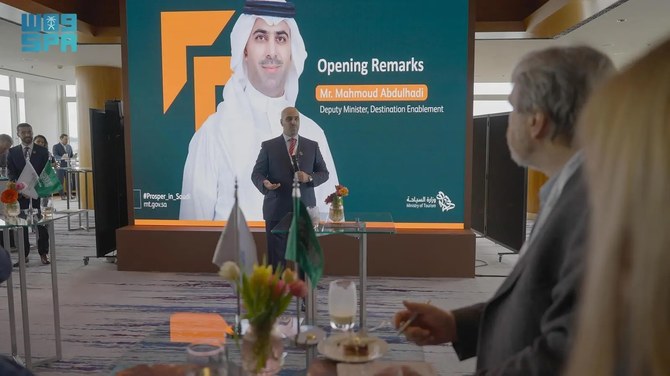
RIYADH: Saudi Arabia is set to witness the development of new luxury resorts as the Tourism Development Fund signed a memorandum of understanding with Karisma Hotels and Resorts International, the Saudi Press Agency reported.
The signing took place at the International Hospitality Investment Forum in Berlin on Wednesday. The MoU seeks to explore opportunities for developing resorts and enhancing new areas of the tourism and hospitality sector in the Kingdom.
The agreement outlines a roadmap to determining a methodology for investing and providing financial and non-financial support to a vibrant ecosystem of investors, clients, and partners.
“The Tourism Development Fund is unlocking a great potential with Karisma Hotels and Resorts as we join forces to explore the feasibility of funding and supportive innovative projects that will significantly contribute to the growth of the tourism sector,” SPA quoted TDF CEO Qusai Al-Fakhri as saying.
The fund aims to connect the world with opportunities in the Kingdom’s fast-growing tourism sector. It offers financial and non-financial support to international and local investors.
“We are proud to announce the company’s significant entrance into Saudi Arabia with multiple hotel developments throughout the Kingdom in collaboration with our partners and local developers. Karisma will introduce first-of-its-kind experiential leisure hotels in partnership with worldwide acclaimed brands, bringing a new offering of leisure vacations to the Kingdom,” Esteban Velasquez, CEO of Karisma Hotels and Resorts, said.
Saudi Arabia’s tourism sector has revised its 2030 target to 150 million visitors, up from the initial 100 million.
The tourism sector has become important to the national economy, as spending on tourism by domestic and international tourists exceeded SR250 billion ($66.7 billion) in 2023. The sector is set to contribute 10 percent to the non-oil gross domestic product and create 1 million job opportunities by 2030. This spending represented more than 4 percent of the Kingdom’s GDP and 7 percent of the non-oil GDP, highlighting the significance of the tourism sector to the Kingdom’s economy.
During a panel discussion, Mahmoud Abdulhadi, deputy minister of investment attraction, underscored the Kingdom’s potential opportunities for both international and local businesses to invest in the tourism industry.
He noted that the Hospitality Investment Enablers initiative, announced by the Ministry of Tourism within the Investment Enablers Program, is in line with Vision 2030's strategic goals
The top official said the initiative aims to increase and diversify tourism offerings, enhance the capacity of tourism hospitality facilities in tourist destinations, and attract private investments in the hospitality sector.
Closing Bell: TASI loses 34.45 points to close at 12,465
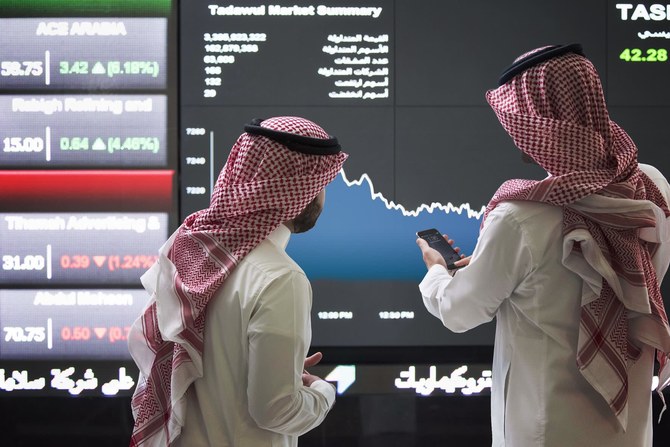
RIYADH: Saudi Arabia’s Tadawul All Share Index closed at 12,465.98 points on Wednesday, dipping 34.45 points or 0.28 percent.
The parallel market, Nomu, gained 92.53 points or 0.35 percent to close at 26,401.91.
Meanwhile, the MSCI Tadawul 30 Index also slightly declined 9.29 points or 0.59 percent to conclude at 1,569.13.
The main index posted a trading value of SR9.5 billion ($2.55 billion), with 96 stocks advancing and 131 declining.
Ash-Sharqiyah Development Co. was the top performer on TASI as its share price surged 9.95 percent to SR21.44. Batic Investments and Logistics Co. followed with its share pricing jumping 9.27 percent to close at SR2.83.
Saudi Ground Services Co. also performed well, climbing 9.09 percent to SR58.80. The Mediterranean and Gulf Insurance and Reinsurance Co. and Almunajem Foods Co. increased 8.53 and 6.32 percent to SR28 and SR117.80, respectively.
Conversely, Fawaz Abdulaziz Alhokair Co. recorded the most significant dip, declining 5.16 percent to SR11.40.
Astra Industrial Group and Etihad Etisalat Co. also experienced setbacks, with their shares dropping to SR175.40 and SR51.39, reflecting declines of 3.73 and 3.39 percent, respectively.
Saudi Chemical Co. and Saudi Real Estate Co. also reported significant losses of 3.08 percent and 2.88 percent to SR7.87 and SR22.22, respectively.
Nomu’s top performer was Future Care Trading Co., which saw a 10.68 percent jump to SR9.64.
Ladun Investment Co. and Mayar Holding Co. also recorded notable gains, with their shares closing at SR5.63 and SR4.10, marking an increase of 9.96 and 7.89 percent, respectively.
Lana Medical Co. and Al-Modawat Specialized Medical Co. also fared well, as their share price increased by 7.25 and 6.92 percent, closing at SR42.90 and SR151.40.
On Nomu, Alqemam for Computer Systems Co. was the worst performer, declining by 9.72 percent to SR90.10. Other underperformers included Saudi Parts Center Co. and Clean Life Co., whose share prices dropped 6.10 percent and 5.71 percent to SR60.0 and SR94.20, respectively.
Chinese businesses shown NEOM opportunities as ‘Discover’ tour hits Beijing, Shanghai
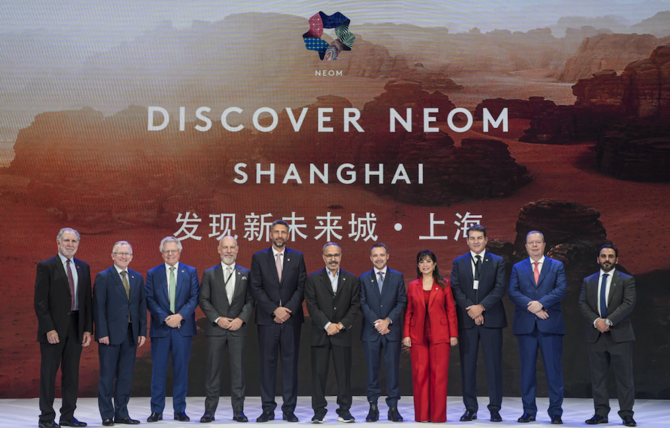
RIYADH: Opportunities for Chinese companies to engage with and invest in NEOM have been showcased in Beijing and Shanghai, attracting significant interest from several companies.
The giga-project kicked off the Chinese leg of its global “Discover NEOM” tour in the capital on April 15, followed by a visit to the country’s biggest city on April 17, attracting a cumulation of over 500 business and industry leaders.
Organized in partnership with the China Council for the Promotion of International Trade Beijing and CCPIT Shanghai, the events featured presentations by NEOM’s leadership team that highlighted on-the-ground progress and milestones, as well as detailed overviews of the initiative’s diverse economic sectors.
Numerous opportunities for Chinese companies to engage and invest in the advanced urban and economic zone were showcased during these gatherings, eliciting significant interest. Many companies expressed enthusiasm and discussed concrete next steps with NEOM’s leadership, according to a release.
“We are grateful to CCPIT Beijing and CCPIT Shanghai for supporting our visit to China and for the opportunity to present NEOM’s vision,” Nadhmi Al-Nasr, CEO of NEOM, said.
“To date, NEOM has already engaged with over 15 major Chinese businesses and invested in a number of Chinese startups to support the growth and diversification of NEOM. Collaboration with China will continue to play a vital role in the development of NEOM, and we look forward to strengthening our engagement with the country’s business community,” he added.
Over 100 Chinese building companies participated in the event’s construction-focused forum, which presented many collaboration opportunities.
Furthermore, the private showcase, “Discover NEOM: A New Future by Design,” was a highlight of the events.
It offered guests an immersive experience exploring NEOM’s developments. These included THE LINE, a 170-km-long city designed as the future of urban living; Oxagon, which is reshaping the traditional industrial model; Trojena, NEOM’s mountain resort; and Sindalah, a luxury island destination in the Red Sea set to open later this year.
“Both Beijing and NEOM are accelerating the development of new modes of productivity, deepening comprehensive reforms, promoting scientific and technological innovation, and working to ensure the protection of our environment,” Guo Huaigang, chairman of CCPIT Beijing, said.
“We look forward to the role our cooperation can have in Beijing’s future prosperity,” he added.
Expressing Shanghai’s interest in fostering its relationship with Saudi Arabia, Zhao Zhuping, deputy secretary general of the Shanghai Municipal Government, stated that the entity looks forward to deepening mutually beneficial engagement with NEOM.
“Discover NEOM China” marks the latest installment of NEOM’s global roadshow, following engagements in major international cities such as Seoul, Tokyo, and Singapore, as well as New York, Boston, and Miami.
Paris, Berlin, and London have also been visited by the expedition.
Saudi crude production hits 7-month high in February
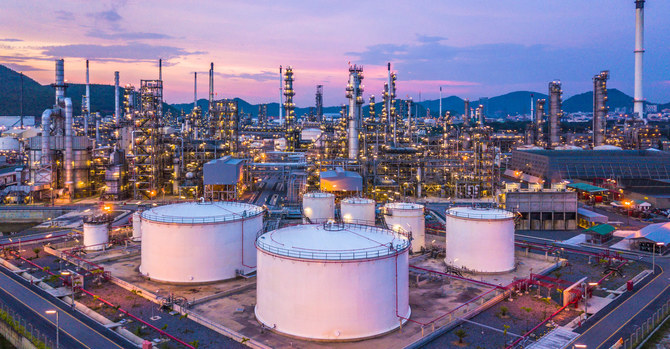
- The Kingdom’s crude exports rose to 6.32 million bpd or 0.32 percent: JODI data
RIYADH: Saudi Arabia’s crude production reached a seven-month high of 9.01 million barrels per day in February, data from the Joint Organizations Data Initiative showed.
This represented a rise of 55,000 bpd or 0.61 percent compared to the previous month.
Furthermore, the data indicated that the Kingdom’s crude exports rose to 6.32 million bpd, reflecting a monthly increase of 0.32 percent.
In early April, the Organization of the Petroleum Exporting Countries and its allies, known as OPEC+, chose to keep their existing output policy unchanged as oil prices hit a five-month high.
Led by Saudi Arabia and Russia, OPEC+ extended voluntary output cuts of 2.2 million bpd until June to bolster the market. The decision was reached during the 53rd meeting of the Joint Ministerial Monitoring Committee on April 3.
Oil prices surged due to supply constraints, attacks on Russian energy infrastructure, and conflicts in the Middle East, with Brent crude exceeding $89 a barrel.
This extension of cuts, alongside voluntary reductions announced in April 2023, including 500,000 bpd cuts from both Saudi Arabia and Russia, now extends through December of this year.
As a result of this decision, despite the monthly increase, crude output remains approximately 14 percent lower than the levels observed during the same month last year.
The next JMMC meeting is scheduled for June 1.
Refinery output
Meanwhile, refinery crude output, representing the processed volume of crude oil yielding gasoline, diesel, jet fuel, and heating oil, surged to a five-month high. It increased by 10 percent compared to the previous month, reaching 2.68 million bpd, according to JODI data. This also marked a 10 percent increase from the 2.44 million bpd recorded during the same period last year.
As one of the world’s leading oil producers, Saudi Arabia plays a crucial role in supplying these refined products to meet global energy demands.
In February, diesel, constituting 38 percent of the total output, declined by 7 percent to 1.02 million bpd, with its percentage share decreasing from 45 percent in January. Motor aviation or jet fuel maintained a 22 percent share, experiencing an 11 percent increase to 597,000 bpd. Meanwhile, fuel oil, making up 17 percent of the total refinery output, saw a slight uptick of 0.22 percent, totaling 455,000 bpd.
Conversely, refinery output exports surged to a 10-month high, reaching 1.39 million bpd, a 12 percent monthly increase. The most significant rise was observed in motor and aviation oil, up by 45 percent to 275,000 bpd. Fuel oil exports followed with a 38 percent increase to 219,000 bpd, while diesel oil saw a 13 percent rise to 629,000 bpd.
In February, 62 percent of refinery diesel oil output was exported, marking the highest percentage in eight months. Fuel oil and motor and aviation gasoline followed suit with export percentages of 48 percent and 46 percent, respectively.
Direct crude usage
Saudi Arabia’s direct burn of crude oil, involving the utilization of oil without substantial refining processes, experienced an increase of 52,000 bpd in February, representing a 17 percent rise compared to the preceding month. The total direct burn for the month amounted to 360,000 bpd.
The Ministry of Energy aims to enhance the contributions of natural gas and renewable sources as part of the Kingdom’s goal to achieve an optimal, highly efficient, and cost-effective energy mix.
This involves replacing liquid fuel with natural gas and integrating renewables to constitute approximately 50 percent of the electricity production energy mix by 2030.



